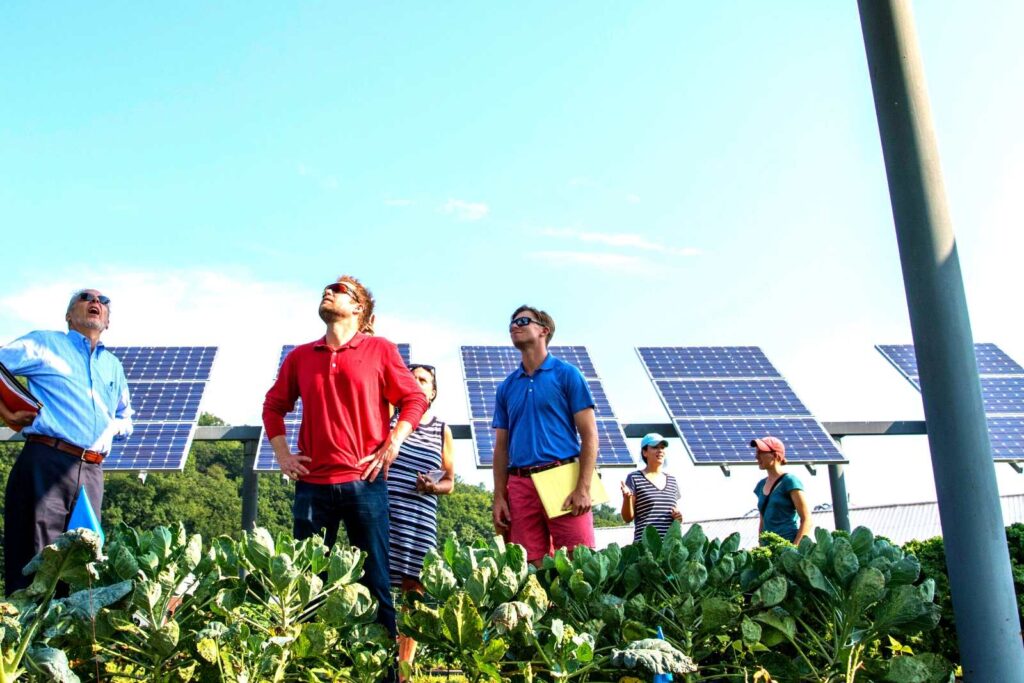Australia is burning. The snow is melting in Siberia. Up to 200 species go extinct each day. Landfills are overflowing. And packaging is contributing to all of the above. Our disposable economy produces a lot of waste, which has been linked to global warming, decreased forest coverage, and mountains of trash.
As a packaging expert, you’re in a prime position to make an impact. If you can reduce waste, adopt biodegradable alternatives, or otherwise become more sustainable, you might save lives and contribute to a more prosperous future.
Sound pie in the sky? It’s not! We’re going to share 3 strategies that you can leverage to make your packaging more sustainable. But first, let’s examine why packaging experts must become sustainability experts.
There’s a famous Native American proverb:
“We do not inherit the Earth from our ancestors. We borrow it from our children.”
When we use up finite resources today, we could deny future generations access to those resources. And if we pollute the environment now, someone else will eventually have to clean it up.
For the packaging industry, this is a serious challenge. Writing for Thinkstep, Sophie Kieselbach and Flora D’Souza point out:
The media floods us with images of once beautiful beaches, now resembling landfills, and vulnerable ocean animals dying after swallowing plastic packaging. Our immense consumption of packaging also depletes non-renewable resources.
The packaging industry catches a lot of flak for pollution. Packaging experts who want to fend off bad press will have to become sustainability experts. Sustainability isn’t something packaging experts can ignore. Writing for Greener Package, Mike Ross puts it this way:
“A packaging professional once held a more strictly technical role, mainly focused on product development and product protection. The modern professional’s role has greatly expanded to include expertise in sustainability.”
Regarding packaging project management, Ross notes:
“Before considering materials, dimensions, tolerances, specifications, etc., it is crucial to first understand what exactly the business is requiring.”
Businesses are requiring more sustainable packaging. This could be due to enlightened leadership, consumer pressure, government regulations, or a mix of all of the above.

Strategy #1- Sustainability Will Require A Systematic Approach
So how can we achieve genuinely sustainable packaging? The first step towards sustainable packaging is understanding that it’s a collective effort. As Bryan Shova writes in Packaging Digest:
“True solutions will come through “systems thinking” that requires the material supplier, manufacture, retailer, consumer and the municipality to share in the premium costs and labor required to design, collect and recycle packaged materials.”
You can’t shoulder the burden alone. Your employees, suppliers, customers, and end users all need to pitch in. Start building systems and making allies now. Even if you can’t pivot to sustainability right away, you can lay the foundation for future success.
“End of life” is a consideration for any packaging expert. Too much packaging is making its way into landfills, or worse, the environment. Writing for The Die Line, Shova argues:
“The sustainability payoff for some of these technologies has more to do with end-of-life recovery than actual materials, so the consumer would ultimately need to understand his or her role in recycling or composting.”
Consumers must play a vital role in sustainability. The wasteful consumers of today need to become enlightened sustainability gurus. Likewise, recycling plants will need to become more efficient. In the same blog post, Shova notes that sustainable packaging often ends up in the landfill anyway. The reason?
“Many recyclable and compostable products and packages look too similar to non-sustainable items and can’t easily be differentiated by workers sorting the recycling streams.”
Even organizations trying to reduce waste fall short. Packaging experts can help by making their sustainable products more distinguishable.
Strategy #2- Don’t Dream About Tomorrow, Do What You Can Today
Could futuristic materials provide the answers? Sustainable, biodegradable plastics, recycled polyethylene terephthalate (rPET), and other technologies may solve a lot of headaches. Unfortunately, these materials aren’t ready for commercial use.
In the short run, we can’t wait for technological progress to solve our woes. Our grandchildren might never see plastic bags clogging up streams because of biodegradable plastic. However, right now pollution remains a huge problem.
With a smart approach to design, you can create sustainable packaging that uses less materials. The less material you use, the better, even if those materials are plastics.
Writing for the Pakfactory blog, Mark Velarga notes:
“The primary goal of minimalist packaging is to save raw materials and eliminate waste without compromising the durability or functionality of the packaging.
The packaging should be able to perform its duty of protecting the products and conveying the message of the brand.”
Even materials with a bad rep may have a sustainable future. In Packaging Digest, Trina Matta makes a strong case that plastic can be part of sustainable strategies, arguing:
“A plastic bottle made of recycled content is an example of sustainable sourcing of plastic. Would it really be better to shift this particular package to aluminum or glass? Most likely not. In this case, plastic (and in particular recycled-content plastic) appears to be the most sustainable option available.”
In the future, biodegradable plastics and other materials might make the traditional plastic bottle obsolete. Right now, if you can identify sustainable sources for plastic and also ensure that end of life means recycling, plastic could be a sustainable option.

Strategy #3- Your Rock Star Packaging Employees May Be Your Most Sustainable Asset
Sustainability isn’t just about technologies and organizations but also individuals and company culture. Writing for Forbes, William Craig claims:
“When sustainable work culture is nurtured, employees arise to actively steer the company toward its mission with passion and innovation, promoting its longevity and success.”
Your employees may be your greatest sustainable asset. Green technology may not yet be ready or commercially viable. Yet your employees can reduce waste, design packaging that uses less material, cut down on energy use, and take other measures to reduce your company’s impact on the environment.
Some companies are now turning to internal “green teams” to drive change. Everyone wants to go green, but there’s often no unifying vision or process. By setting up internal teams that regularly meet and tackle sustainability together, you can amplify results.
As Deborah Fleischer explains in Greenbiz:
“Green teams are self-organized, grassroots and cross-functional groups of employees who voluntarily come together to educate, inspire and empower employees around sustainability. They identify and implement specific solutions to help their organization operate in a more environmentally sustainable fashion.”
While many green teams are internally driven, evolving market conditions will increase pressure on companies to become more sustainable. Writing elsewhere, William Craig says:
“Customers are wise to the fact that they can deserve something more from companies in return for brand loyalty: things like cleaner supply chains, fairer working conditions, community give-backs, more inclusiveness and constructive participation in social issues.”
Sustainability may be inevitable as consumer demand for green products grows. This is going to have a huge impact on the packaging industry. How about your company? Do you have rock stars on staff who can lead the charge? Sustainability doesn’t have to be a hassle or a burden. It can be a passion that drives engagement.
What does this have to do with executive recruiting? EVERYTHING! Recruiting sustainable talent that takes your brand to the next level is a niche all its own. If you’ve read our Top Talent white paper, you know this is a crucial passion for our firm.
Chase & Associates
We Have Your Back



